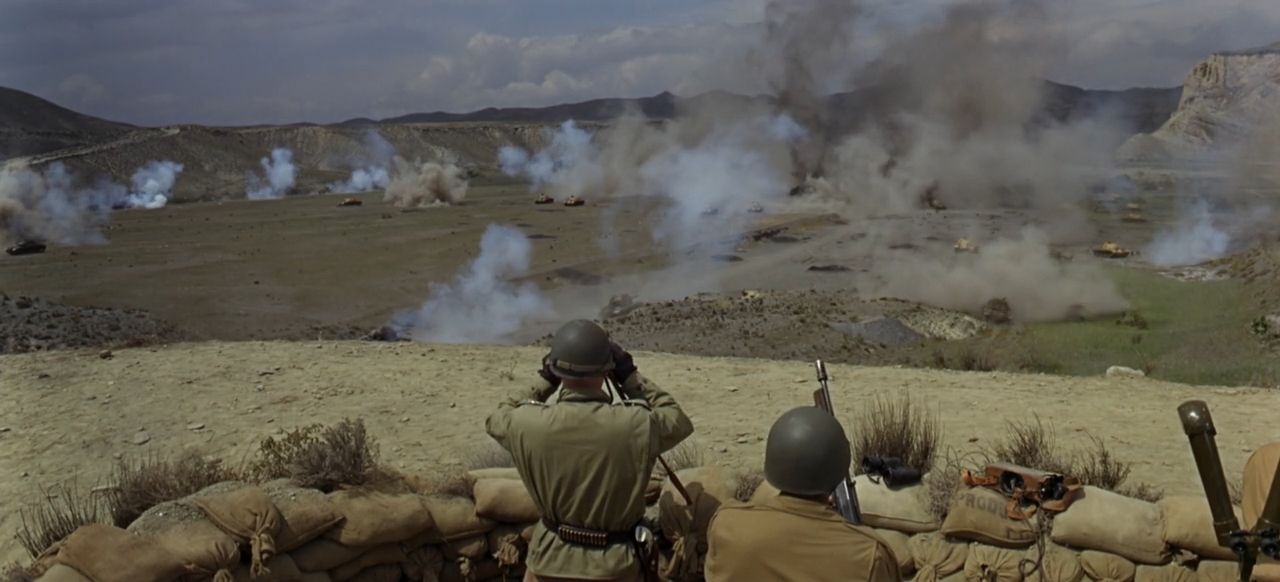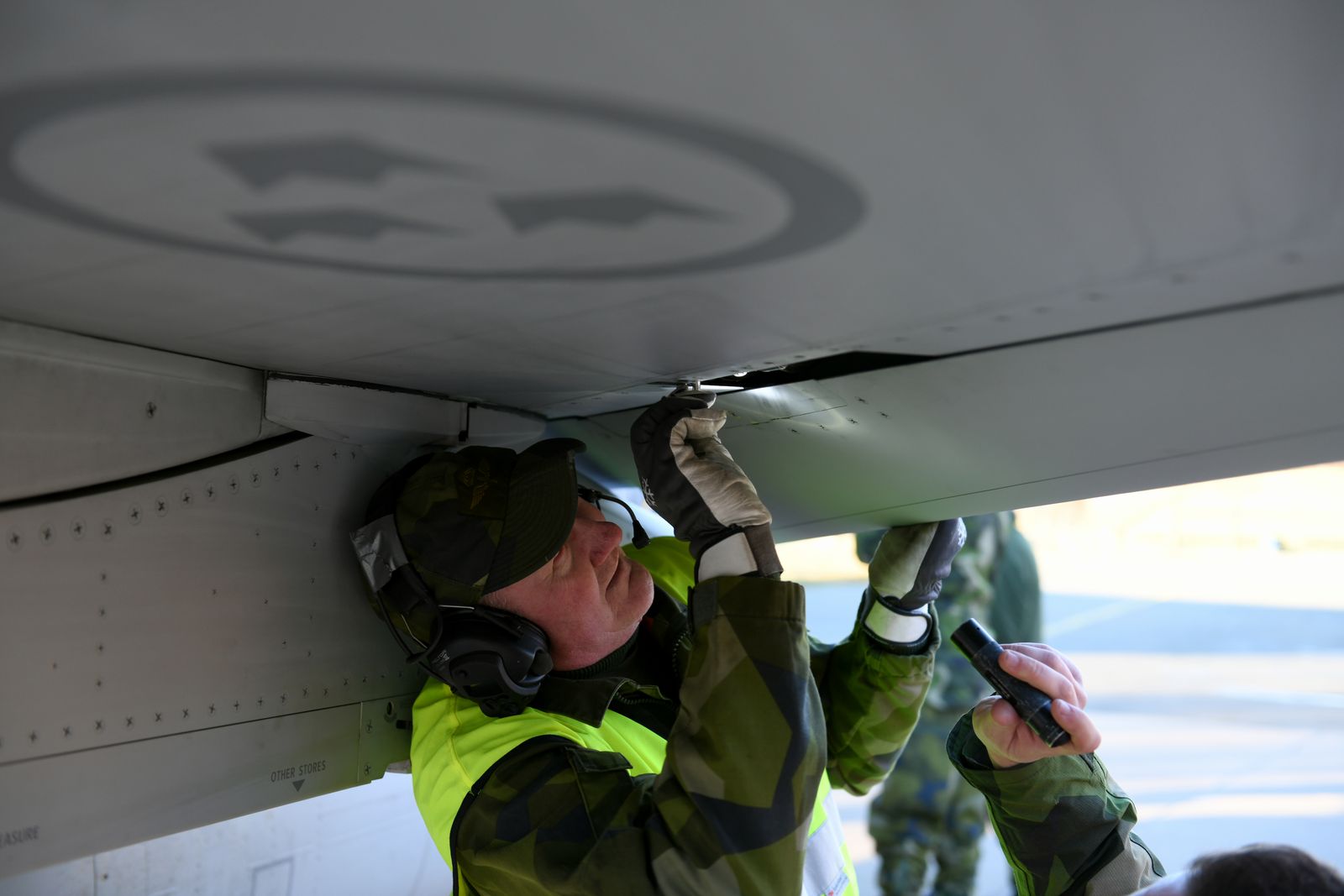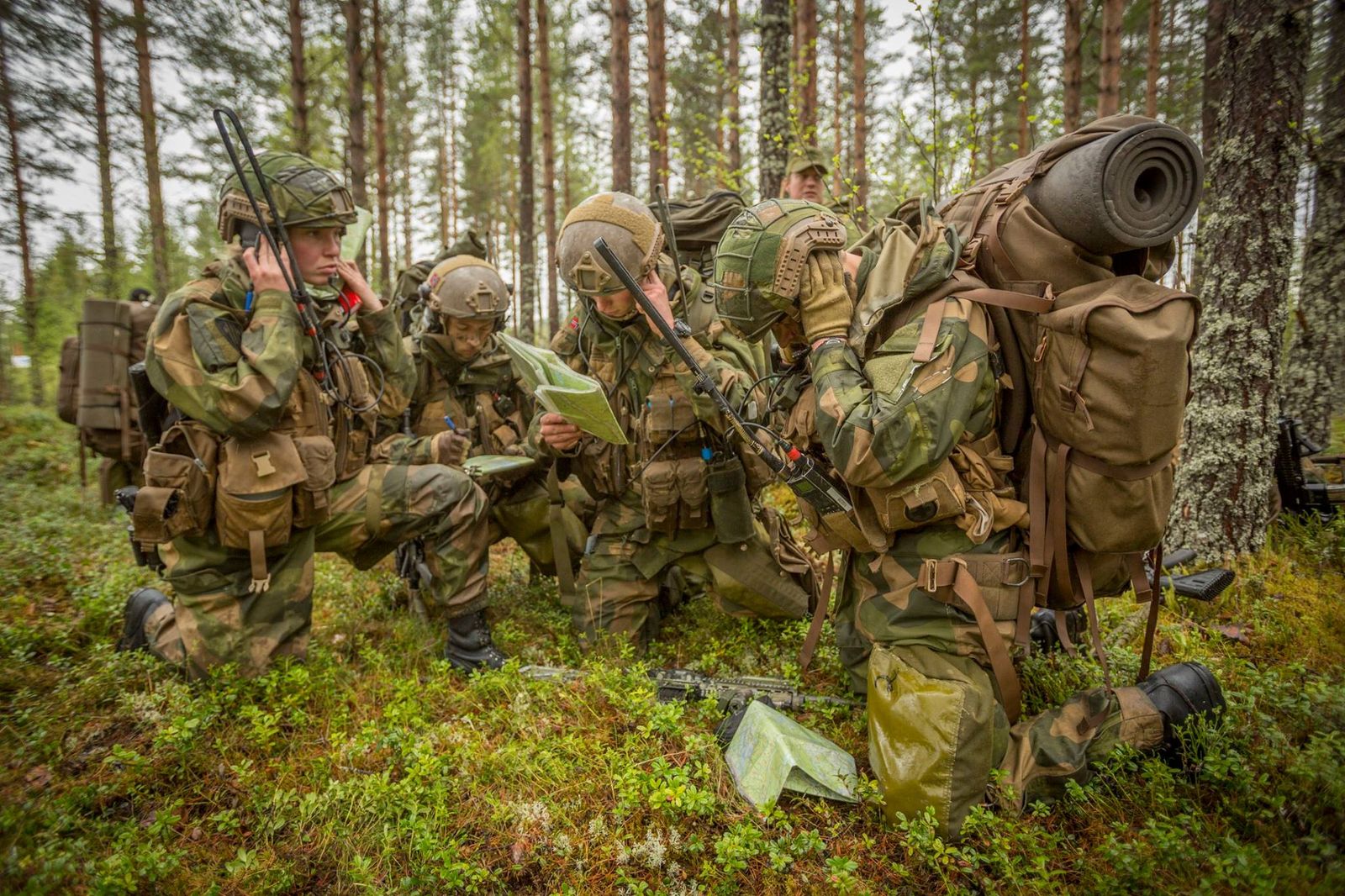The metaphors of battle that officers use both hint at, and help propagate, their underlying view on tactics. As combat experience against a peer enemy becomes more distant, this view risks becoming more stylized, idealized and, most importantly, unrealistic. The battle-as-symphony imagery is popular but might be an example of such a drift in understanding. The following text will unpack and scrutinize this metaphor in the light of well-known characteristics of real battle against an equal. Rather than being an exercise in donnish semantics, the motivation is to contribute to realistic understanding of, and preparation for, this most difficult of military challenges.
The symphony is an alluring metaphor for describing military operations. A trilling introduction is supplied by the woodwinds of intelligence and information operations. The battle moves in to the exposition of shaping operations by adding the percussions and strings of deep fires and special forces. In the development, the armoured brigade adds the full weight of strings, brass and percussion, as the battle crescendos towards the execution of an exquisitely synchronized combined arms breach. As the enemy is beaten, the recapitulation of the pursuit reverts to simpler, yet effective themes, before the force consolidates its success during the coda. Guiding it all is the masterfully written sheet of music and the prominent conductor. For military professionals from a Western cultural tradition, this image has strong connotations to the highest strata of creativity and talent. What practitioner of any field would not want to be equated to Mozart or Beethoven; to exercise their profession with the same awe-inspiring skill and sophistication?
Perhaps one of the best known uses of this metaphor was made by General George S. Patton, a recognized master of combined arms tactics:
There is still a tendency in each separate unit to be a one- handed puncher. By that I mean that the rifleman wants to shoot, the tanker to charge, the artilleryman to fire. That is not the way to win battles. If the band played a piece first with the piccolo, then with the brass horn, then with the clarinet, and then with the trumpet, there would be a hell of a lot of noise but no music. To get the harmony in music each instrument must support the others. Team play wins. You musicians of Mars must not wait for the band leader to signal you...You must each of your own volition see to it that you come into this concert at the proper place and at the proper time.
Patton’s specific metaphor went on to influence later generations of maneuver officers in their mental image of how to win battles. At the US Army’s Maneuver Center of Excellence (MCoE), this quote is used as introduction to a lecture called “Symphony of Destruction”, concerning the coordinated use of firepower in battle. The “symphony of destruction”- turn of phrase also appears in “Musicians of Mars II”, a fictional short story published by the Center for Army Lessons Learned [i] to instruct junior officers in synchronization on the battlefield. The story’s title is itself a direct allusion to Patton’s quote. By way of officers educated at American military institutions, this mental image is liable to make its way to other NATO-countries, as it has already done to the Norwegian Army.

So where is the problem? Patton was prominent in defeating the Wehrmacht, one of history’s most competent war machines. Surely his view, as expressed through that metaphor, has powerful merit? There is, indeed, no reason to doubt that it does. However, there is a subtle, yet profound, difference between the semantics of the initial quote and of the metaphors it has later inspired. He never used the word “symphony”. It is telling that the only 16 words the US Army’s MCoE removes when using Patton’s normally 142 word quote are (italics denote the words omitted); “You musicians of Mars must not wait for the band leader to signal you. You must each of your own volition see to it that you come into this concert at the proper place and at the proper time”. This deliberate abridgment removes a clear reference to true intent-based leadership and hijacks it to advocate a more centralized synchronization of combat power. It hints at a desire to present tactics as something based on a sheet of music lead by the conductor-style commander. It desires the battle to be fought as a symphony.
Battle, however, has rarely been a symphony when faced with an evenly matched enemy. As the orchestra enters the stage, they will often have had insufficient time to rehearse a completely new piece. Some musicians will have received new, unfamiliar types of instruments, while others will be using outdated ones. Important sections will arrive late and have to jump into the piece on the fly, while others will suddenly be removed from the orchestra mid-performance. Sheets of music will become distorted or change. The conductor will at changing times become invisible to different sections. And most importantly, there will be a competing orchestra actively introducing discord and trying to overshadow the performance. Even Clausewitz, who revered the great commanders of pitched, contained battles, recognized that only simple manoeuvres were realistic to achieve in hard-fought battles [ii]. Detailed accounts from the last century of combat [1] support Clausewitz’ position. These challenges are well known by military professionals. Accepting this chaos, exploiting it, and thriving in it goes to the core of the tradition of Auftragstaktik, or mission command, itself a central theme of Western military discourse. There seems then to be an increasing juxtaposition between the views that chaos should be channeled, and that it must be dispelled and controlled. Both efforts have their place in the conduct of war. However, it would seem that, without the tempering effect of high-intensity combat against a peer, the striving for order is overpowering the acceptance of chaos.
Is this emerging assumption really misguided? Even though Patton (and Clausewitz) where masters in their time, those times have changed, and the instruments of combat have evolved. Digital information technology and comprehensively educated personnel should provide an unprecedented ability to introduce order and synchronization. But has this really been put to the test? The current generation of officers only have experience against enemies that fall well short of the peer threats that guide our training and preparation. In the closest cases, the enemy has obligingly showed up to the concert hall despite having a clearly underfunded and lacking orchestra. This is the dream scenario for the conductor-commander, and possibly an important cause of the current belief in battlefield synchronization. With the most modern of amplified instruments, Western forces power through their symphony and drown out the sounds from the competing orchestra. Any missing or deficient sections are merely replaced by redundant resources. In most cases during the last decades, this dynamic has been predictable to our enemies. They therefore leave us alone in the concert hall to perform our masterfully written pieces uncontested while they themselves stand on the street outside handing out remix-tapes of our efforts, often resonating better with the target audience. Significantly, none of those instances shake the belief that strict synchronization is an attainable ideal. Indeed, if these are the challenges the future continues to bring, we might well be on the right track tactically (if not necessarily strategically). On the other hand, as long as we regard peer-combat as our defining task, we must remain critical of these experiences.
One might assert that we have never lost sight of the chaos of peer-combat, and that the rigorous symphony training is merely the best way to prepare for this. “Doctrine is the foundation for improvisation” is a well-known mantra. However, the interpretation of this phrase goes to the heart of the competing views on tactics. One view regards “improvisation” as both the most important aspect, and the most difficult to master. Doctrine is to focus on fundamental and general education of the tactician. The majority of time should be used to hone tactical improvisation in “free-play” situations.
The competing (and arguably dominant) view emphasizes “doctrine”, with pursuit of perfection in procedures and synchronization. The hope is that when we are met with the inevitable friction of war, the degraded quality of our performance will still be sufficient to carry the day. In this view, doctrine becomes voluminous, proscriptive, and prioritized with the majority of time for training and exercise. The little time set aside to train improvisation at higher levels betrays a view that improvisation is either less important or does not require deliberate practice to master. Familiar expressions of the latter view are exercises with predetermined timelines, and with clearly defined (and commensurately resourced) “main training audience” and “opposing force”. In their most extreme forms, these exercises will have had the opposing sides meet during planning to coordinate timelines down to company or battalion level. The goal with this is to ensure that certain events take place. It is apparently more important to ensure that predetermined procedures are executed to perfection, than to challenge leaders at all levels to select the most appropriate procedure in a fluid situation and then execute it in a timely and acceptable fashion.

A moderating argument here will be that higher level exercises, especially in the NATO-framework, are more about promoting alliance cohesion and communicating capability. However, this only highlights why awareness of this discussion is relevant for the political level too. If national politicians expect to be audience to symphonies when assessing their militaries, that understanding will cause cascading incentives down through their military. It will reward leaders who excel at scripting sheet music and who focus on ensuring orchestral brilliance. This is undeniably important and laudable, but a danger is that it will make invisible the leadership traits that thrive in the chaos of war.
As an army is shielded from the realities of peer war, we risk that the conductor-leader gains prominence, to the total exclusion of intuitive improvisers. The difference between the two is one of kind, not degree. The symphony orchestra attains its impressive skill through unrelenting practice, both collectively and individually. It will master a wide range of pieces and achieve synergistic effects that are only made possible by the closest of (guided) interplay between instruments. The opportunity cost of this investment is easy to forget, however.
Different, but no less demanding, practice is needed to attune the army to operating in severe friction. Our “Musicians of Mars” must of course possess a strong mastery of their individual instruments. Further, they must possess a wide repertoire of different chord progressions, both in isolation and harmonic with a variety of instruments. Rather than the exquisite complexity of the philharmonic orchestra, these chords must be simple enough to be rapidly reproducible from memory. The true test of skill for our musicians, and where they differ in kind, not degree, from the symphony, should be their ability to spontaneously insert their instrument to maximise harmony. This will not develop as a continuation of the symphony approach, and will require reallocating time from perfection-oriented practice. Our musicians must develop an intuitive understanding of many different genres, and the utility of their instrument given suddenly changing sound pictures. Most importantly, they must develop an affinity with situations where their own, and the competing, band are experimenting with chords. They must be able to jump in on the fly, exploit harmony as long as it lasts, and then be mentally prepared to adapt to unexpected developments. The band leader-commander will have contributed by fostering education for this flexibility prior to the performance. He or she will also be the most experienced performer and will initially guide the band by determining what sound picture is most likely to be popular. From there the commander must trust that band members will improvise as the situation requires. Arguably, this is closer to what General Patton promoted. It will sound very different from the sonatas of the classical masters. Likewise, history tells us that real combat will be very different from the scripted exercises of today.
The metaphors officers use in their discourse are merely symptoms, and changing them are superficial and insufficient in isolation. When these metaphors are linked to underlying mental images of what wins battles, however, it becomes a meaningful step towards ensuring our military is realistically prepared for the shock of real battle. Maybe what we should invoke in our inspiring speeches is not the polished skill of the symphony orchestra, but rather the flexible creativity of the jazz band jam session.
Photo: Patton observing the Battle of El Guettar from Franklin J. Schaffner's Patton (1970).
[1] For descriptions from several conflicts see, for World War One: The Infantry Journal (1934), Infantry in Battle, Richmond: Garrett & Massie. For World War One to Six-Day War: US Army Armor School (1986) Armor in Battle, Fort Knox: US Army. For the Falklands War: Spencer Fitz-Gibbon (1995), Not Mentioned in Despatches, Cambridge: Lutterworth Press
[i] Center for Army Lessons Learned [CALL], 2016, Musicians of Mars II. Available at http://call.army.mil, p.51
[ii] Clausewitz, Carl von, 1984, On War, Trans: Howard, M and Paret, P, Princeton: Princeton University Press [Kindle e-book], p.119







